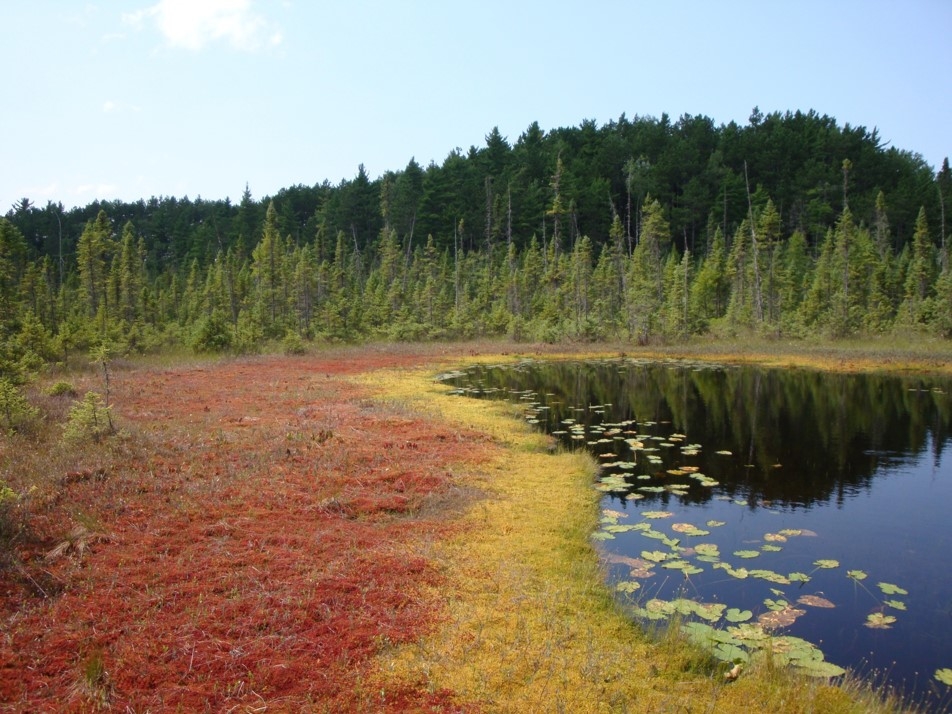Bog Group

Bogs are open ombrotrophic peatlands that are characterized by a continuous carpet of sphagnum moss, a species-poor herbaceous layer, low ericaceous, evergreen shrubs, and scattered and stunted conifers. Found throughout Michigan but concentrated in northern Michigan, Bogs occur primarily in kettle depressions within pitted outwash plains and moraines and in shallow depressions on glacial outwash plains and glacial lakeplains. Soils are extremely acidic to very strongly acidic, saturated peats that are often deep. Natural processes that influence species composition and community structure include peat accumulation, insect outbreaks, flooding by beaver, windthrow, and occasional fires.
Two natural community types fall within the Bog group: bog and muskeg. Classification of these Bog types is based on species composition, community structure, geographic distribution, and landscape setting.
Citation
Cohen, J.G., M.A. Kost, B.S. Slaughter, D.A. Albert, J.M. Lincoln, A.P. Kortenhoven, C.M. Wilton, H.D. Enander, and K.M. Korroch. 2020. Michigan Natural Community Classification [web application]. Michigan Natural Features Inventory, Michigan State University Extension, Lansing, Michigan. Available https://mnfi.anr.msu.edu/communities/classification. (Accessed: April 19, 2024).

